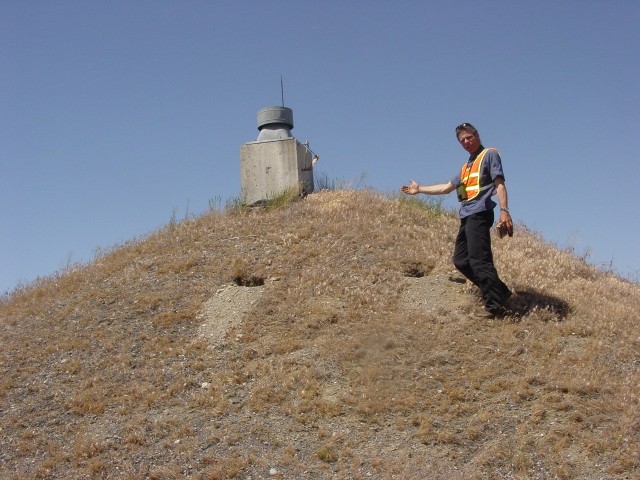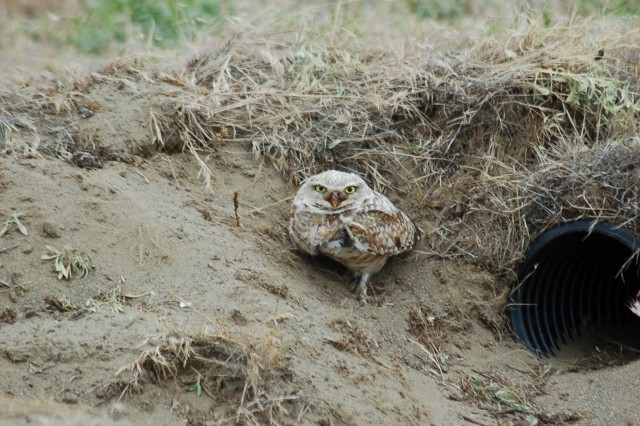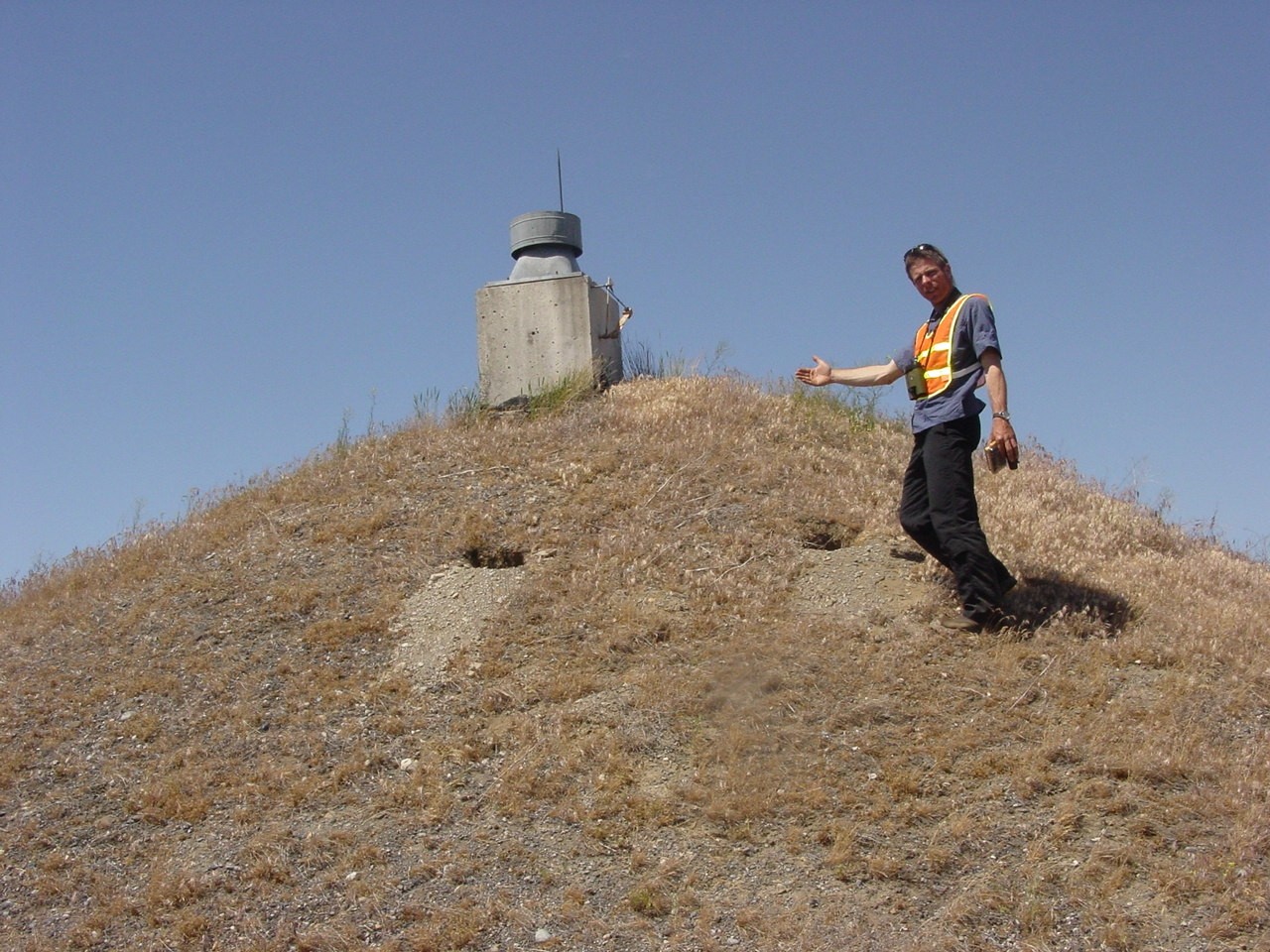'Owl condos' are move-in ready and coyote-proof
Umatilla Chemical Depot, Hermiston, Ore. - While the U.S. Army Umatilla Chemical Depot is best known for the Umatilla Chemical Agent Disposal Facility and its mission to dispose of deadly chemical weapons, life of a different kind thrives in other areas of the depot.
Not far from the depot chemical weapons storage area containing some of the most deadly substances known to humanity, dozens of pairs of Burrowing Owls (species: Athene cunicularia, sub-species: Western hypugaea) have made their homes in abandoned badger dens, old pipes, and other holes dug by small mammals and abandoned. Those burrows are inadvertently protected from human intrusion by the same fences, heavily armed guards and other defensive measures that ensure security of the Umatilla chemical munitions stockpile.
The depot has enjoyed more than 64 years of relative isolation in the dry Shrub-steppe of northeastern Oregon since it began operating in October 1941 on the eve of World War II. That isolation has had a somewhat unintended result, creating a nature preserve, where today the Army actively protects wildlife and the environment on the depot. The Army also partners with other agencies to protect or develop habitat for various species.
For example, the depot's pronghorn antelope herd, managed by Oregon Department of Fish and Wildlife and directly monitored by UMCD Environmental Directorate staff, is well-known locally. It's occasionally seen from nearby public roadways. Burrowing Owls are even more reclusive and usually harder to see on the depot, partly because they're only nine-and-a-half inches tall and blend in well with their surroundings.
The Burrowing Owl population in the United States is declining. It's listed as a national "Bird of Conservation Concern" in the U.S. Fish and Wildlife Service Pacific Region and other parts of North America. It's also listed as "endangered" in Canada and "threatened" in Mexico. In 2006, under terms of the international Migratory Bird Treaty Act, the U.S., Canada and Mexico jointly selected the Burrowing Owl as a "Species of Concern" due to loss of habitat. The international choice of the bird highlighted the need for Burrowing Owl habitat protection and development.
The Army was concerned enough to do something about it. In partnership with the FWS and with full support from Depot Commander Lt. Col. Bob Stein, a new Burrowing Owl habitat development project was begun at UMCD when planning for migratory bird protection started in 2007.
"Today's Army mission includes environmental protection in many forms," said Stein. "We protect the depot environment by not only keeping chemical agent safely contained, but by working with federal and state agencies to protect wildlife."
FWS Biologists, UMCD Environmental staff, and volunteers partnered to construct new owl burrows in 2008 from modern materials that mimic desirable features of those abandoned badger dens-including the prerequisite darkness and dirt floors. The artificial burrows have several advantages including easy access points for banding or counting owls, plus predator-proof construction. Future plans include addition of a low-light video camera.
"We approached the US Fish and Wildlife Service with the idea of assembling a team to build artificial burrows-we call them owl condos," said Don Gillis, UMCD natural resources manager. "We were partly inspired by a similar project nearby at the U.S. Department of Energy's Hanford site."
The federal Sikes Act requires creation and implementation of depot Integrated Natural Resources Management Plan. The Act also requires conforming to the Migratory Birds Treaty Act signed by the U.S., Canada, Mexico, Russia and Japan. That treaty mandates enhanced habitat for migratory birds.
The Umatilla Chemical Depot's integrated plan covers protection of various species including Burrowing Owls and Long-billed Curlews, which are also found at the depot. The Long-billed Curlew was also chosen by the US, Canada and Mexico as the 2007 "Species of Concern." As part of the integrated plan, the depot drafted an interagency cooperative agreement with FWS that outlined the Burrowing Owls program and included depot staff and FWS biologists to work on the project. Volunteers from both on post and off post, and depot staff, rounded out the team.
Dr. Mike Gregg and James Rebholz of the FWS Mid-Columbia River National Wildlife Refuge Complex in Burbank, Wash. are the FWS wildlife biologists assigned to work on the project. They select specific sites for artificial burrows, take global positioning system coordinates, and work closely with Gillis managing the project. Volunteers from both on post and the off-post community did a lot of the digging and construction-as did Gregg, Rebholz and Gillis-and it's hard work.
Gillis met with Gregg and Rebholz in early May 2008 to discuss the owl project under an interagency agreement between the FWS and the Army. The decision to install owl burrows was made, and by the end of the month they procured materials, fabricated three owl condos, and installed them. An additional 15 condos were installed during three more work session in June with the help of volunteers.
The burrows are built in the depot Environmental Division shop using plastic barrels and buckets, flexible drainage piping, construction adhesive and other hardware. The artificial burrow design is based on one developed by Hanford's Volpentest HAMMER Training and Education Center in Richland, Wash.
To construct an artificial burrow, Gillis first cuts a 55-gallon plastic barrel in half. Then he glues a 5-gallon bucket on top. Matching holes are cut in both the barrel and the bucket to create a "tunnel" for easy access to the underground burrow for counting birds or eggs, banding chicks, and condo housekeeping-cleaning out rodent remains, for example.
Burrowing owls are highly susceptible to coyote predation. To prevent coyotes from invading the burrows, the "owl condos" are designed to be coyote-proof. Eight to ten feet of six-inch diameter "flexpipe" drainage pipe is installed at the burrow site as the entrance to the condo. The pipe is too small for a coyote to enter and longer than a coyote would want to dig to get to its prey.
At the site of each artificial burrow, the first step is to excavate a hole with a depot backhoe. The half-barrel is placed upside down in the hole in the ground. A hole in the new top of the half-drum matches the size of a hole in the bottom of a 5-gallon bucket. The two are glued together.
The flexpipe entrance tube is then added at the burrow site. It has the bottom cut off so owls walk only on dirt, which mimics abandoned badger dens or other owl burrows. To cover the hole at the top, another 5-gallon bucket filled with dirt is placed inside the permanently mounted 5-gallon bucket, which darkens the condo, won't blow away in the strong winds typical of the depot, and protects the burrow from predators.
Finally, the entire owl condo is re-covered with earth by the backhoe and hand shoveling, and it's made to look natural except for the flexpipe entrance and a small mound of dirt on top of the the 5-gallon bucket access hole. The earth covering protects the burrow from heat, too.
The owl condo entrance tunnels face different compass directions. Some face the prevailing southwest wind while others face away from that prevailing wind. The team is taking field notes and collecting data that may reveal which direction might be more acceptable to the owls, which tend to stay inside during windy days.
Six clusters of three condos each-a total of 18 burrows-are scattered across the depot, with more planned. They're placed within 100 feet of pre-existing active burrows so that the curious owls might explore them and perhaps move in.
"The owls seemed to like it right away," said Gillis. "Within 24 hours one owl moved in-we nicknamed her "Buffy"-and within a few weeks we saw activity in 14 of the 18 condos."
"Activity" is defined as a visual sighting, owl pellets, preened feathers or beetle parts spotted in front of the burrow entrance. Some owls adopt the condos as their new homes. Others don't.
Several depot employees and four employees of Vista Engineering of Richland, Wash. volunteered to construct the owl condos. The UMCD Public Works Directorate provided the backhoe and operator.
In addition to contributing shovels and volunteers, Vista Engineering will also provide engineering recommendations for a power source for the new low-light video camera. Solar power will likely be used due to the remoteness of the burrows.
Even with the backhoe on their side, both the volunteers and professional staff put in a lot of effort. Hot days in northeastern Oregon can be well over 100 degrees. The blowing sandy soil sticks to anything and anybody when it rains or when workers sweat.
But there's one payoff for the team members for their hard work. Each owl condo will be named after a volunteer.
"We appreciate all the hard work by these dedicated team members," Stein said. "This is a tremendous partnership between the Army and our neighbors. We're proud to be a part of this environmental protection effort."
















Social Sharing